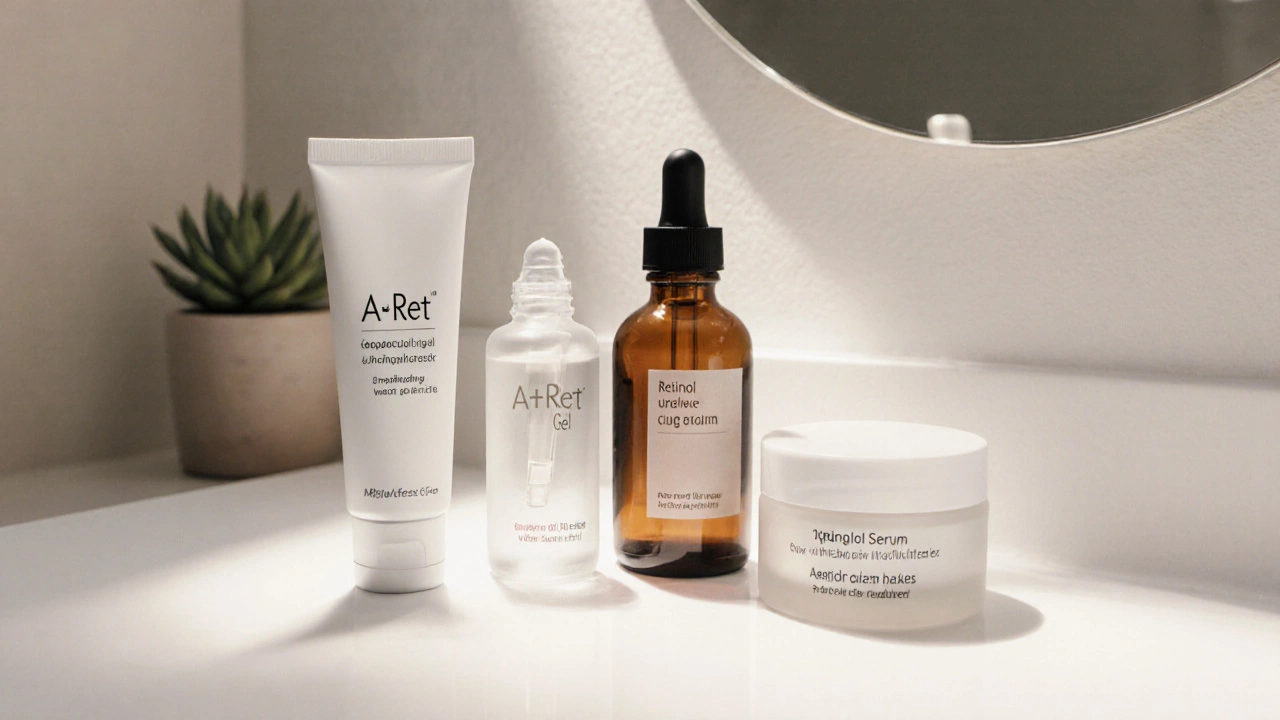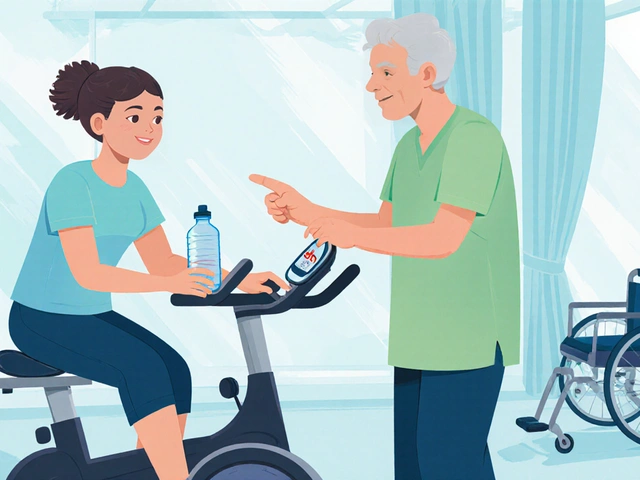Tretinoin: A Practical Overview
When talking about tretinoin, a prescription‑strength retinoid used for acne and anti‑aging. Also known as Retin‑A, it works by speeding up skin cell turnover and reducing inflammation.
Another key player is retinoids, a class of vitamin A derivatives that influence skin growth. Retinoids include both topical forms like tretinoin and oral options such as isotretinoin. They share the ability to unclog pores, boost collagen, and even out skin tone. Because tretinoin belongs to this family, understanding retinoids gives you a clearer picture of how the cream actually helps.
Most people start with acne, a common skin condition marked by pimples, blackheads, and inflammation. Tretinoin is often prescribed when over‑the‑counter products aren’t enough. By increasing the rate at which dead skin cells shed, it prevents blockages that cause breakouts. In many cases, users see a noticeable drop in new lesions within a few weeks.
But tretinoin isn’t just for acne. In the world of dermatology, the medical specialty focused on skin health, doctors also rely on it to smooth fine lines, fade dark spots, and improve overall texture. The same cell‑turnover boost that clears pores also encourages fresh, collagen‑rich skin, making it a go‑to for anti‑aging routines.
How Tretinoin Works and What to Expect
Think of skin cells like a conveyor belt. Tretinoin speeds up that belt, moving old cells out faster and pulling fresh, healthy cells to the surface. This results in fewer clogged pores, less inflammation, and a smoother surface. The trade‑off is a short period of irritation—dryness, redness, and a feeling of “peeling.” Most users notice these effects during the first two weeks, then they calm down as the skin adapts.
Starting with a low concentration (0.025% or 0.05%) and applying a pea‑sized amount every other night helps minimize irritation. Pairing it with a gentle cleanser and a moisturizer can keep the barrier intact. If you experience persistent burning, cut back to every third night or switch to a lower strength. Your dermatologist can adjust the regimen based on how your skin reacts.
Consistency is the secret sauce. Skipping applications or using too much can stall progress. Aim for a routine that fits your lifestyle, and protect your skin with sunscreen every day—tretinoin makes you more sensitive to UV rays.
Beyond the basics, there are a few practical tips that often get overlooked. First, wait 20‑30 minutes after washing before you apply tretinoin; damp skin can increase irritation. Second, avoid using other strong actives (like salicylic acid or benzoyl peroxide) on the same night unless your doctor says it’s safe. Finally, store the tube at room temperature; freezing can change the texture.
When used correctly, tretinoin can transform both acne‑prone and mature skin. Users frequently report clearer complexions, fewer blackheads, and a noticeable reduction in fine lines within three to six months. The results are gradual, but the payoff is long‑lasting because the medication reshapes how skin renews itself.
While the benefits are clear, it’s also important to know the potential side effects. Common ones include temporary redness, peeling, and mild itching. Rarely, people may develop severe dermatitis or eye irritation if the cream drifts into the eyes. If you notice swelling, blistering, or a rash that worsens, stop using the product and contact your healthcare provider right away.
Pregnancy is a special case. Tretinoin is classified as Category C, meaning the risks aren’t fully understood. Most doctors advise women who are pregnant or planning to become pregnant to avoid topical retinoids. Always discuss family planning with your dermatologist before starting treatment.
In summary, tretinoin sits at the crossroads of acne management, anti‑aging skin care, and dermatologic therapy. Its ability to accelerate cell turnover makes it a versatile tool for anyone looking to improve skin clarity or reduce signs of aging. By pairing it with gentle supporting products, using the right strength, and staying consistent, you can harness its power while keeping irritation in check.
Below you’ll find a curated collection of articles that dive deeper into buying generic versions safely, comparing tretinoin with other acne treatments, and exploring related skin‑care topics. Whether you’re new to retinoids or looking for advanced tips, the posts ahead will give you actionable insights to make the most of your tretinoin journey.
A clear, side‑by‑side comparison of A‑Ret Gel (tretinoin) with popular alternatives, covering effectiveness, irritation, cost, and usage tips for acne and aging concerns.
View Details

